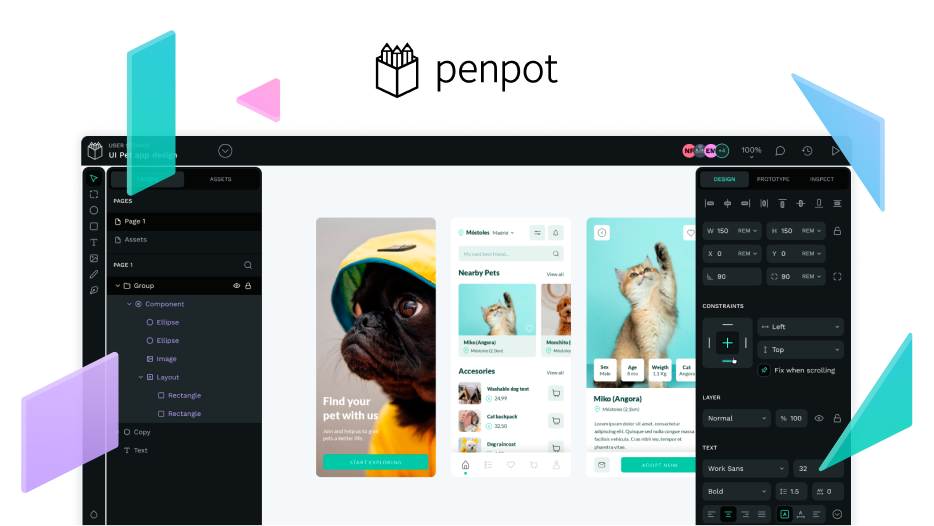We are still recovering from the hangover of the Penpot Fest, where we felt the love and potential of the community, thanks! We also made some big announcements, that are an important part of our roadmap.
1.19 Penpot release
In this context, this release may not be an eye-catcher as it is a necessary step for our major initiatives. On this 1.19 Penpot release we bring Access Tokens (another gateway to community creativity!), performance improvements and tons of enhancements, a lot of them from our beloved community contributors ![]()
Access tokens
Personal access tokens function like an alternative to our login/password authentication system and can be used to allow an application to access the internal Penpot API.
This opens up a wide range of possibilities in terms of integrations and is an important step on the critical path of the Penpot’s plugins system.
Enhancements
We’ve developed a fair amount of small enhancements, these are some examples:
Faster dashboard data load
The projects are getting bigger and bigger and the faster they load the sooner the fun begins. The data load at the projects dashboard has been dramatically improved. This is one among the performance improvements that has been published (expect much more to come).

Default naming of text layers
Text layers are automatically named with the same content of their first text edition. No more “Text-1”, “Text-2”, etc.

Create typography style from a selected text layer
Now you can create a typography style based on an existing text layer right from the assets tab. Just select and click.

Board as ruler origin
Boards are design areas by themselves and their inner elements positions should are related to them, not to the infinite canvas. That’s why now the rulers info are reset to the board limits when their elements are selected.

“Show interactions” setting at the view mode
We’ve realized that finding the interactions at the prototypes is not always as easy as we would like to be, specially for the people that did not set them and changing the setting to view the iteraction each time was a bit cumbersome. Now the default setting is “Show interactions on click”, that will make easier to find the interactions while respecting the desings. And not only that, but also you will be able to share the link to the interaction with your selected setting.

Community code contributions
By far, this is the Penpot release that has the most code contributions. We cannot emphasize enough how happy we are to see how Penpot is more and more a product of the community. Let’s see only a couple of them:
Reorder shadows, because the order of the factors can change the product (by @akshay-gupta7).

Improvements on elements distribution: Now you can’t distribute less than 3 elements (it just made no sense) and can distribute elements that overlap in their x or y axes (by @dfelinto).

Other community contributors were @astudentinearth, @ondrejkonec and @ryanbreen. Hooray to them and to the Penpot community as a whole! ![]()
Still want more detail? Take a look at our Dev Diaries.

